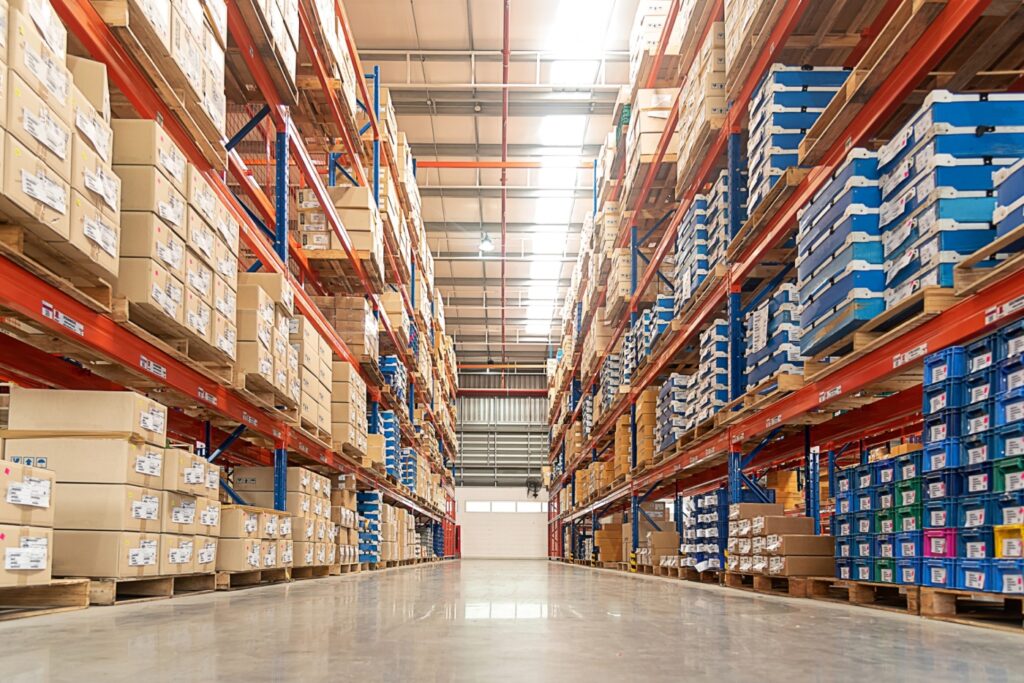
Recently, we explored ways to find additional office space within your building.
We’re lacking space, so now what?
In today’s super competitive, hyper-tight industrial market, moving an operation is problematic as a relocation target may not be available. Not to mention, moving is expensive, inefficient and the payback to your company may be many years ahead. Alternatively, many simply cannot move.
Their reasons? The premise is owned, special permitting may be in place, proximity to employees, a lease that doesn’t expire for several years and so on.
But if your operation needs more room regardless of the reasons above, space must be found. Today I’ll share a few ideas as to how.
In our experience, many operations believe they’re out of space when in reality a bit more can be found in an existing location.
Add a production mezzanine: A production mezzanine can be a great way to increase production square footage without consuming floor space. If you own your location, add machinery or processes, look into this solution.
Store some finished product or raw materials outside: Subject to city ordinances (if outside storage is allowed), a yard or a secured area outside multiplies your usable square footage.
Lease additional space nearby: Whether you own or lease your location, a temporary fix to your space needs may be accomplished by leasing space down the street. But be forewarned, you may create inefficiencies. Certainly, the upside to this strategy is that the excess space (if the lease is flexible) can be discarded at the lease expiration (if the space is no longer needed) or renewed until a more permanent solution can be achieved.
Outsource a function to another producer: This solution is potentially costly and should be compared with moving and keeping the function in-house. Some economies can be achieved, however, if the function is new (and the upside unknown) or the barriers to entry are formidable.
Separate and relocate a portion: Once again, while fully acknowledging the main reason companies won’t relocate because of the inefficiency created by operating from multiple locations — it can work in some cases.
The best example comes from a client of ours. Needed was an upscale office image combined with a plain vanilla warehousing function. The two were diametrically opposed and unattainable in one building. We discovered a solution! Relocate the office into an owned location and leave the warehouse at the existing location. Space issue solved.
Use a third-party logistics company: Also known as a 3PL, these independent warehousing providers serve as an outsource for all of your warehousing needs. A 3PL provides a “soup to nuts” solution for additional warehousing. Included in the per pallet charge are warehousing, access, shipping and receiving, insurance, etc.
Add building square footage to your location: This solution would only apply if all of the following criteria exist — you own your location, the site is large enough to accommodate additional square footage and the city will allow additional square footage to be constructed. If all of these apply, congratulations! You managed to foresee your growth and planned accordingly.
Rework the racking plan and buy a swing-reach forklift: Every time you modify aisles into a narrower configuration, you gain roughly 33% in pallet storage density. Therefore, moving your wide aisles to narrow aisles increases storage density by 33%, and by moving from narrow aisles to very narrow aisles, you save another 33%.
Of course, this increased storage capacity comes at the price of increased capital investment in lift trucks and pallet racks. A quick and easy tip to help evaluate if you can increase your storage space in your current building is to stand at one corner of the warehouse and look out at the opposite corner.
If you can see the opposite corner without obstructions, you likely have an opportunity to increase storage using increased investment in materials handling products. Commodity class, stacking height and sprinkler calculation must be considered before you go vertical.
Add another shift or two: We have clients who have put off moving for several years by adding a second and then a third shift. Generally, the advantage of the second shift is that most overhead (rent, exec salaries, benefits, etc.) is covered in the business generated by the first shift. The second and third shifts become very profitable as a result.
So, there you go. There’s more space out there than you knew existed.
Allen C. Buchanan, SIOR, is a principal with Lee & Associates Commercial Real Estate Services in Orange. He can be reached at abuchanan@lee-associates.com or 714.564.7104.
Related Articles
Real estate news: 8 Los Alamitos apartments sell for $3.9 million, or $489,375 each
HOA Homefront: Virtual meetings and a law that came too late
Condo questionnaire causing some boards to boycott Fannie, Freddie financing
Why your real estate agent etches her name in knives
Californians 35% less likely to qualify for starter home than US house hunter
